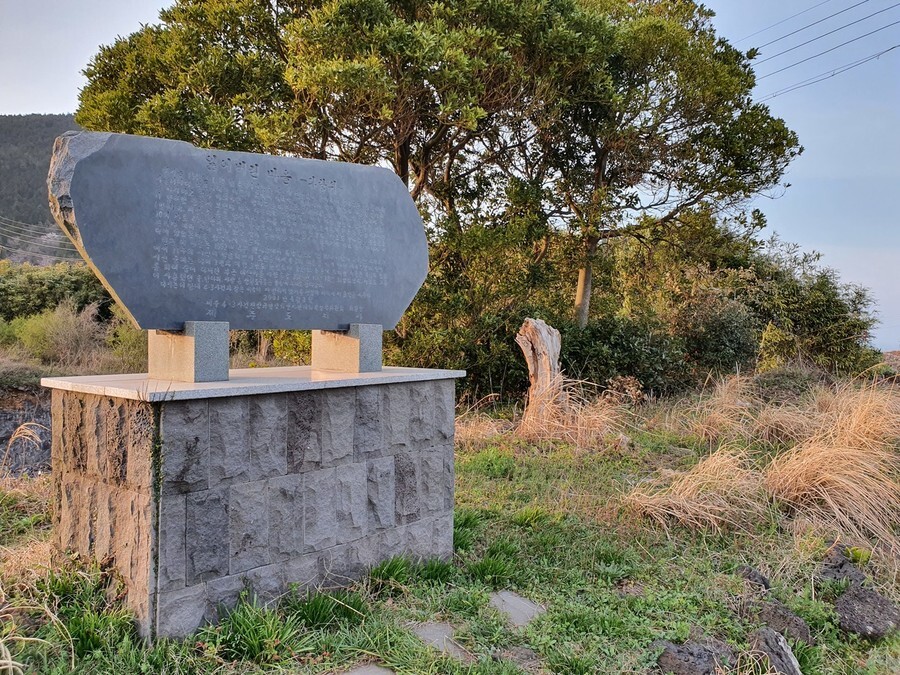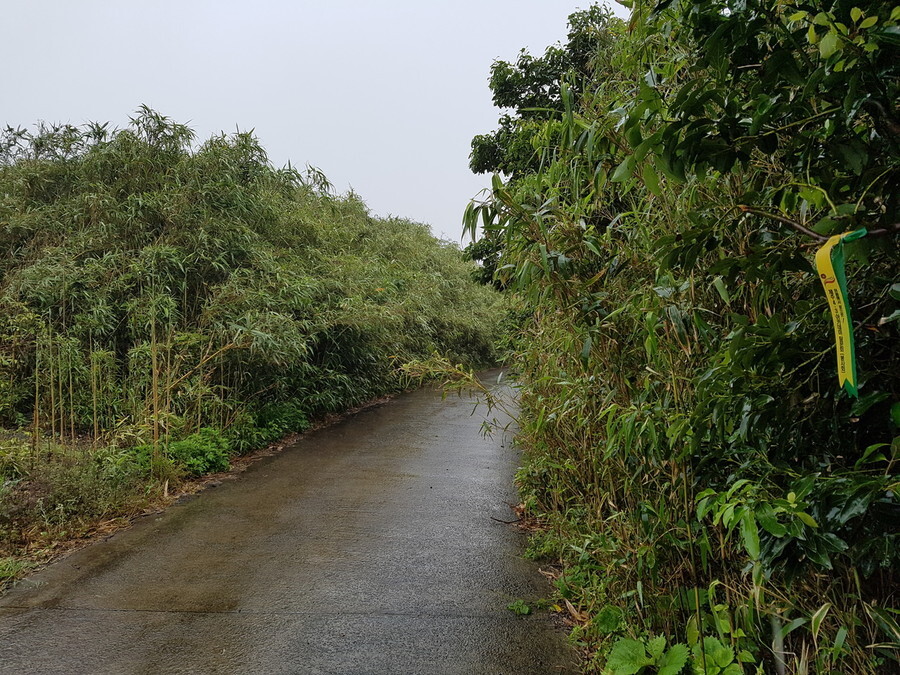hankyoreh
Links to other country sites 다른 나라 사이트 링크
The quest to rediscover Jeju’s lost towns and villages

Newly built structures line the boundary of Jeju City’s Ora neighborhood along Yeonbuk Road, a major thoroughfare connecting the new and old city. At the time of the Jeju Massacre, villages known as Eounul and Haesani were located on either side of Yeonbuk Road. But they were set ablaze by punitive forces, and traces of them are difficult to even spot today. The only thing testifying the fact that villages used to be here is a stone marker reading “lost village.”

In Jeju, the term “lost village” is used to refer to villages left in ruins after the events of April 3, either because they were burned down or because their evacuated residents never returned. Recently, it was learned these lost villages numbered 134. The number, which is 50 higher than the 84 named by the South Korean government in its 2003 “Jeju April 3 Incident Investigation Report,” is the result of a full-scale investigation launched by the Jeju 4/3 Peace Foundation in May 2012 into the losses suffered by individual villages.
Recently, the foundation published part one of its “Additional Jeju April 3 Incident Investigation Report,” which includes a full-scale account of the losses suffered by 12 towns/townships and 165 villages on Jeju Island during the events, including massacres categorized by village and victim type. The death toll also increased from 14,028 in 2003 to 14,442 as of 2019 after additional reports by victims and family members.
“I always feel a sadness in my heart when I visit the park,” said a 75-year-old surnamed Yang who lives in Jeju’s Ara neighborhood and has been attending April 3 commemoration ceremonies every year.
Tablets of family members separated due to unreported marriages“My mother and mother never registered their marriage, and they ended up dying in the Jeju Massacre. Because their domiciles of origin are different, their tablets in the enshrinement room are separated, and I haven’t been able to enshrine them together.” In many cases, the victims’ villages and hometowns at the time of April 3 differed due to factors such as marriage, relocation, and non-registration of marriage -- yet the victims are categorized strictly according to their domicile of origin. For its additional investigation report, the foundation examined the toll at the individual village level based on the victims’ place of residence in order to gauge the full extent of losses for the island’s villages at the time of the events.

The investigation findings showed 49 of the island’s 165 villages to have suffered 100 deaths or more. If the criterion is expanded to villages suffering 30 deaths or more, the number increases to 129, or 78% of all villages on the island, the report said.
“This means that almost eight out 10 villages had 30 or more people who died,” said Yang Jeong-sim, the director of the foundation’s investigation and research division and the person responsible for drafting the report.
“This is proof that all Jeju residents were victimized,” she said.
By administrative division, the village of Nohyeong in the town of Jeju had the highest death toll at 538, followed by the villages of Bukchon (446), Gasi (421), Hwabuk (361), Iho (355), and Dodu (304). By town or township, Jeju was found to have the highest death toll at 4,119, followed by the townships of Jocheon (1,940), Aewol (1,555), and Hallim (1,037).
Of the 134 “lost villages,” three were set on fire by guerrillas, while the remaining 131 were destroyed either by incineration by punitive forces or the forced evacuation of their residents. The chief damage was inflicted by the South Korean army and police. The villages in question generally ranged between five and 130 households.
“Since the victims had previously been categorized according to domicile of origin, the true situation of losses during Jeju April 3 was not very well represented in some respects,” Yang Jeong-sim said.
“This additional investigation is significant as another step closer to the truth of Jeju April 3, in that it showed the full extent of the losses suffered by Jeju Island’s individual villages,” she said.
By Huh Ho-joon, Jeju correspondent
Please direct comments or questions to [english@hani.co.kr]

Editorial・opinion
![[Column] Park Geun-hye déjà vu in Yoon Suk-yeol [Column] Park Geun-hye déjà vu in Yoon Suk-yeol](https://flexible.img.hani.co.kr/flexible/normal/500/300/imgdb/original/2024/0424/651713945113788.jpg) [Column] Park Geun-hye déjà vu in Yoon Suk-yeol
[Column] Park Geun-hye déjà vu in Yoon Suk-yeol![[Editorial] New weight of N. Korea’s nuclear threats makes dialogue all the more urgent [Editorial] New weight of N. Korea’s nuclear threats makes dialogue all the more urgent](https://flexible.img.hani.co.kr/flexible/normal/500/300/imgdb/original/2024/0424/7317139454662664.jpg) [Editorial] New weight of N. Korea’s nuclear threats makes dialogue all the more urgent
[Editorial] New weight of N. Korea’s nuclear threats makes dialogue all the more urgent- [Guest essay] The real reason Korea’s new right wants to dub Rhee a founding father
- [Column] ‘Choson’: Is it time we start referring to N. Korea in its own terms?
- [Editorial] Japan’s rewriting of history with Korea has gone too far
- [Column] The president’s questionable capacity for dialogue
- [Column] Are chaebol firms just pizza pies for families to divvy up as they please?
- [Column] Has Korea, too, crossed the Rubicon on China?
- [Correspondent’s column] In Japan’s alliance with US, echoes of its past alliances with UK
- [Editorial] Does Yoon think the Korean public is wrong?
Most viewed articles
- 1‘We must say no’: Seoul defense chief on Korean, USFK involvement in hypothetical Taiwan crisis
- 2Will NewJeans end up collateral damage in internal feud at K-pop juggernaut Hybe?
- 3[Column] Park Geun-hye déjà vu in Yoon Suk-yeol
- 4Why Korea shouldn’t welcome Japan’s newly beefed up defense cooperation with US
- 5Thursday to mark start of resignations by senior doctors amid standoff with government
- 6N. Korean hackers breached 10 defense contractors in South for months, police say
- 7[Guest essay] The real reason Korea’s new right wants to dub Rhee a founding father
- 8[Column] ‘Choson’: Is it time we start referring to N. Korea in its own terms?
- 9Kim Jong-un expressed ‘satisfaction’ with nuclear counterstrike drill directed at South
- 10[Editorial] New weight of N. Korea’s nuclear threats makes dialogue all the more urgent